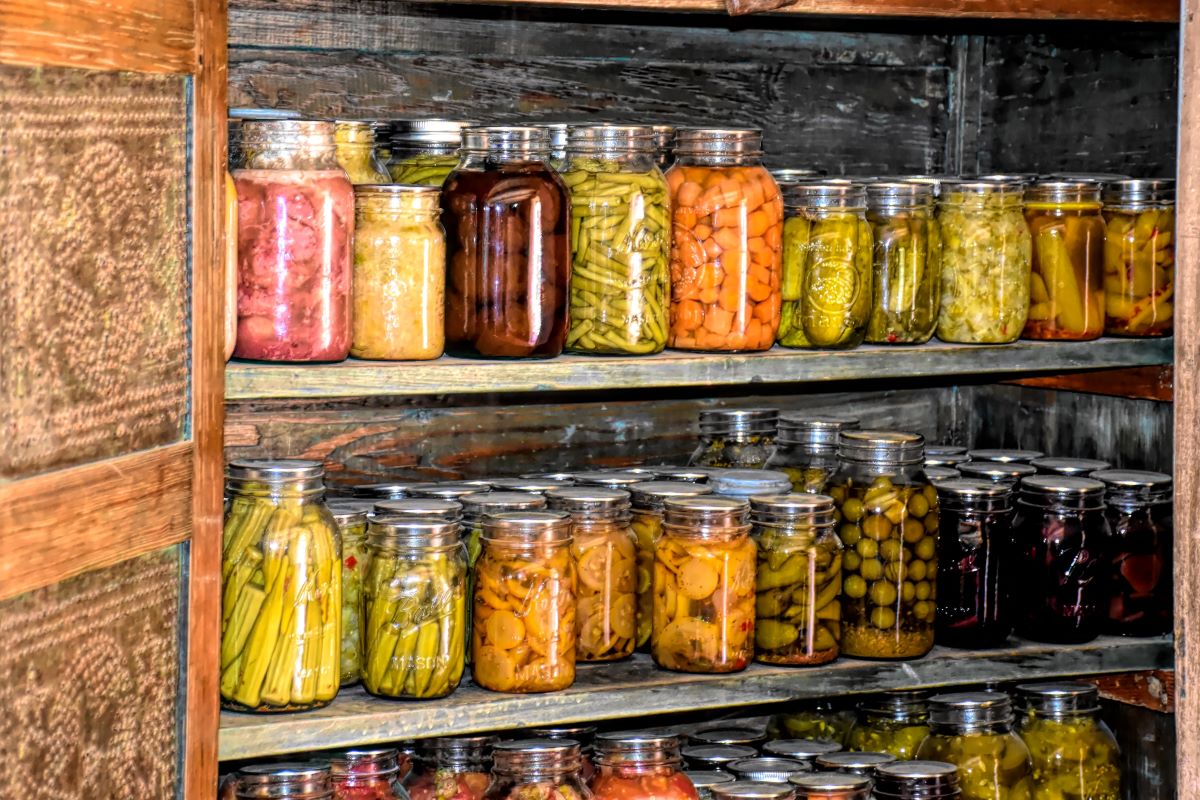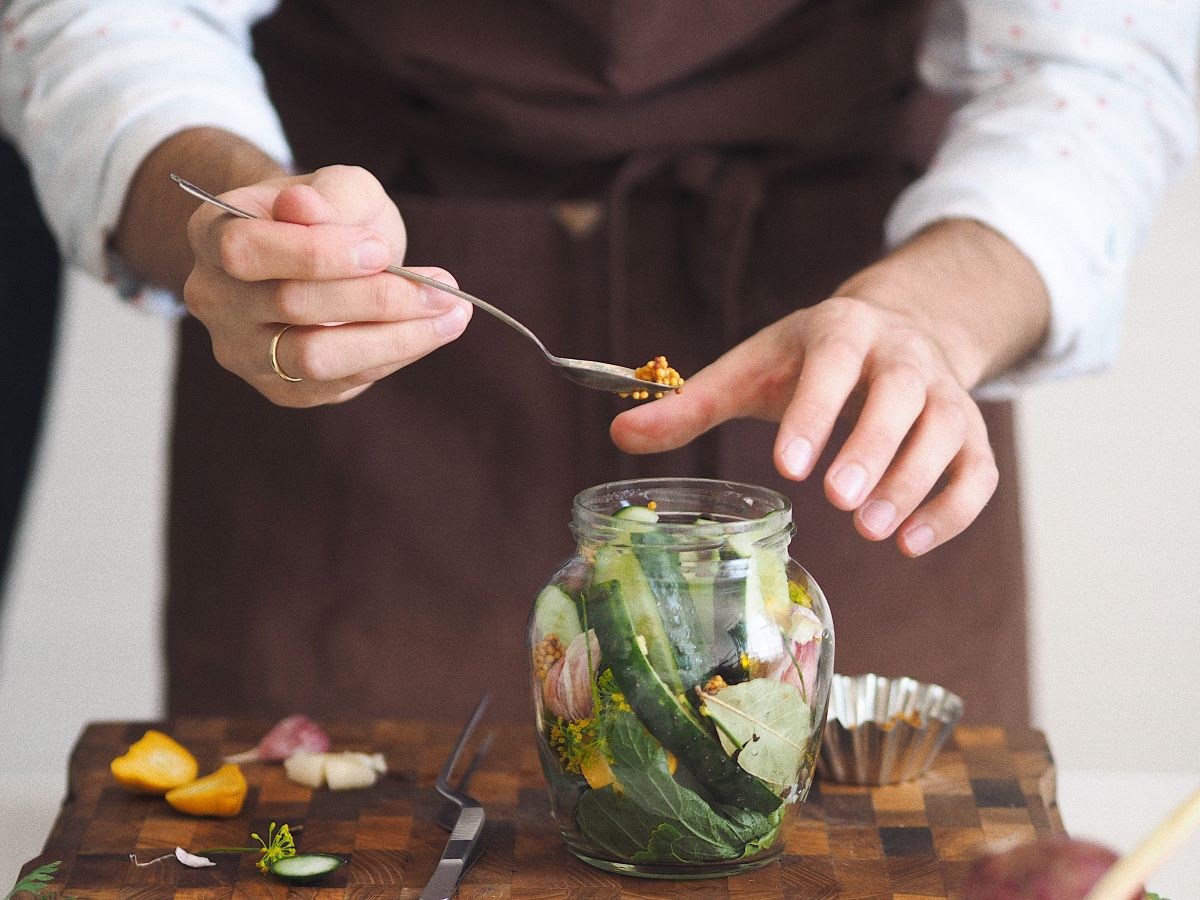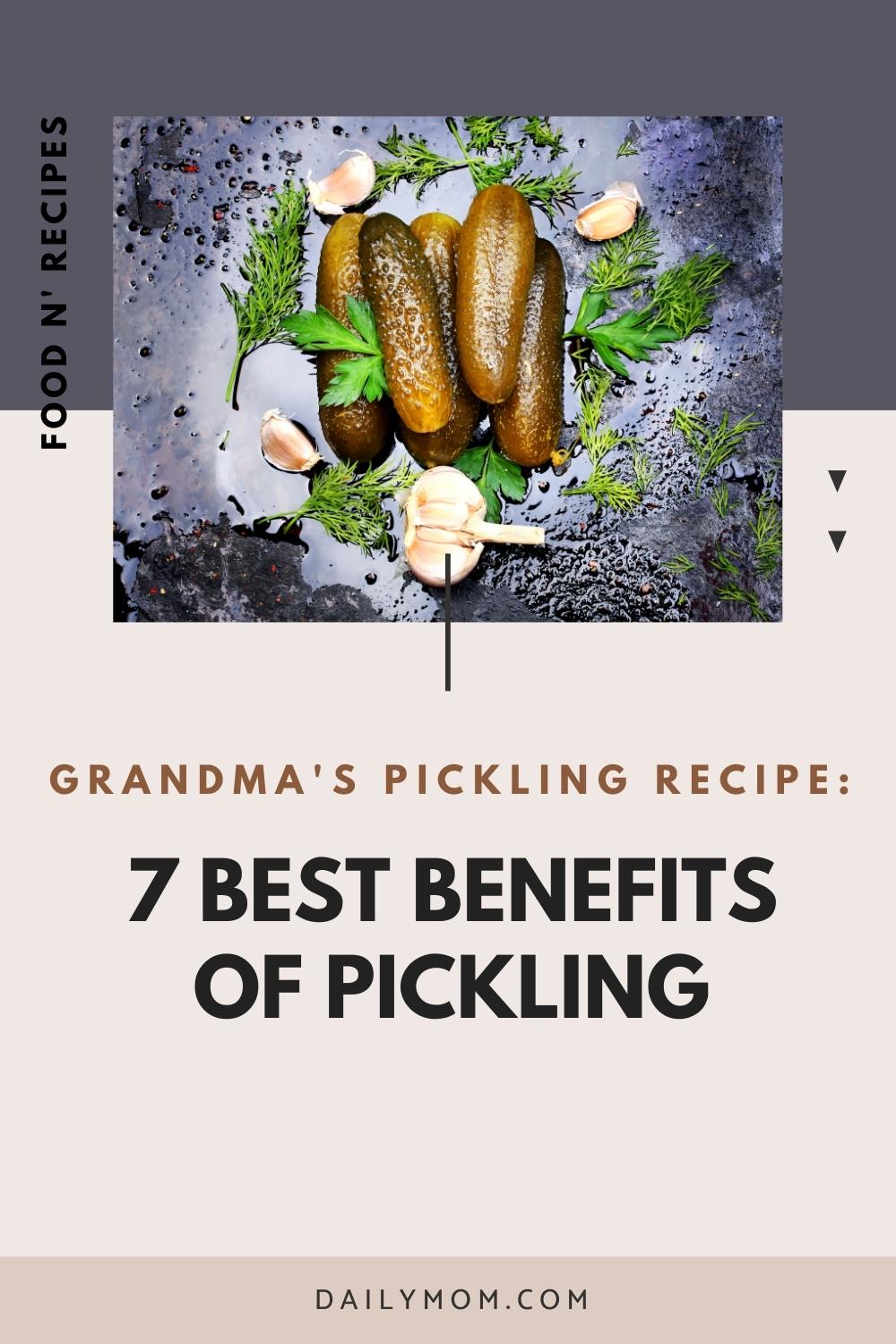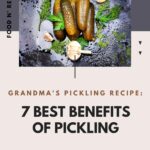Summertime is here and vegetables are in plenty. Whether you’re growing your own garden or shopping local produce stands for the best bulk deals, preserving your vegetable yields is great fun and an easy skill to learn. Most people think of canning as the go-to for food preservation but are intimidated by the time-consuming and somewhat precise process. That’s why this pickling recipe is a great alternative.
Pickling is an age-old tradition, coming from the Dutch word pekel or northern German word pókel, meaning “salt” or “brine.” Its simple nature preserves your produce without losing valuable nutrients and adds a tangy crunch to every bite. Your grandma may even have her own version of a good pickling recipe, but this one will get you well on your way.

Versatility in the Pantry
There’s no shortage of vegetables your pickling recipe will work for, making it perhaps one of the more versatile preservation methods. You can pickle peppers (remember the old tongue twister?), cucumbers, okra, root veggies like beets and radishes, cabbage, eggs, and more. (This pickling recipe is ideal for root and vegetable pickling.)
There are also two key ways to pickle, and they are entirely up to your personal taste preferences. A traditional pickling recipe is like the one shared below—vinegar and salt-based. This is your classic crisp store-bought pickle flavor. It is simple and doesn’t require any special equipment.
Alternatively, you can buy fermenting kits with breathable tops and ferment your pickles. In this process, you would follow a similar pickling recipe for creating the brine, but then top the jars with a weight to keep the produce submerged and use a lid designed for letting the jar burp. (Burping is essential in fermentation, as air pressure builds up from the breakdown of sugars. If not able to release, a jar can become pressurized and explode. If you choose to ferment, be sure to use the correct equipment for your safety.)
Fermenting foods adds a whole extra layer of valuable nutrition, but can change the flavor profile more dramatically and has a higher chance of going rancid. But, done right, it’s a wonderful pickling recipe option with many nutritional benefits.
Read More: 26 Delicious Sweets and Treats To Satisfy Your Hunger

Nutritional Benefits of Pickling
Even in a traditional pickling recipe, a small amount of fermentation occurs. Fermentation leads to the production of probiotics, which are incredible for gut and overall health. Probiotics are good bacteria that help keep the body balanced by keeping bad bacteria in check. They may promote healthier skin, improved immune function, gastrointestinal health, and may even reduce depression.
Because they aren’t cooked, pickling recipes also retain the vitamin nutrients of the produce inside. So pickling may help you increase your intake of essential vitamins such as C, B, and A will remain preserved and become more bioavailable (meaning your body can more readily use them). That’s a big perk! Studies also find that pickling recipes preserve the nutritional profile of antioxidants present in some produce and that the brine itself can host substantial amounts of free radical-fighting and immune-boosting antioxidants C and E.
Pickle juice can also be used as a quick muscle cramp relief. The pain-relieving effects of vinegar paired with the electrolytes found in good quality salt can calm muscle spasms. Using a pickling recipe can also provide you with an effective form of pain relief. Fermented foods like pickles can also aid in preventing blood sugar spikes. Who knew?
Pickling can also make palatable foods that might otherwise not be so tasty in their raw forms. For example, garlic is a common pickle recipe ingredient that has a range of known health benefits but is challenging to eat raw. When pickled its hot kick is muted and eating an entire clove is very doable. The same applies to hot peppers, such as jalapenos or habaneros.
Read More: Isagenix: A New Nutritious, Tasty Snack for Kids On the Go

Grandma’s Pickling Recipe
What you’ll need: about 3lbs of fresh produce, 4-5 pint wide mouth canning jars, 1QT white vinegar, 1C water, 1/2C non-iodized salt (sometimes called canning salt), dill seed, and fresh garlic.
Wash and sterilize the jars and lids by boiling them for about ten minutes. Wash the fresh produce and prepare as necessary. (For example, for okra remove the stems and wash, but leave the caps on; for cucumbers, slice in spears or chips.) Fill the jars tightly with the produce until packed well. For each pint jar, add 2TSP dill seed, two cloves of garlic (whole or minced), and any additional spices you want for flavor. (Popular options include chili powder and cut peppers.)
Once the jars are prepared, cook the 1QT white vinegar with 1C water and 1/2C non-iodized salt. Stir frequently until the salt has dissolved completely. Pour the brine over the contents of the jars until the produce is completely covered, and seal the lids. Let cool on the counter for a few hours, then store in the fridge.
Allow the jars to ferment for 2-3 weeks before tasting. This recipe will keep up to a year at least.
Read More: Remaking The Greatest of Your Grandma’s Family Recipes
There are so many ways to pickle so many different foods. The possibilities are endless, and the benefits list is quite long too. This pickling recipe will get you off to a good start. As you get comfortable pickling, you can play around with different spices for a variety of flavors that complement the foods you choose to pickle, even trying spicy pickling recipes. Cucumbers are a comfortable, safe, and easy place to start. With practice, you can work your way up to more complex recipes with more complex health benefits, like kimchi (fermented cabbage).
Whether you grow your own produce or shop locally, this pickling recipe offers you the setup you need to begin preserving your harvest with as much nutrition as possible. Happy pickling!
WANT TO READ MORE?
Check out Daily Mom’s Food N’ Recipes Section for more pickling recipes, advice, tips, and tricks.
CONNECT WITH DAILY MOM
💖 NEWSLETTER: DAILY READS IN YOUR INBOX 💖
Sign up to receive our picks for the best things to do, see and buy so you can relax and focus on more important tasks! Let us help you be the best version of yourself you can be!
BE SOCIAL WITH US
📌 LOVE IT? PIN IT!📌










































